Comments / Questions (81)
![]() Carina Meyer wrote:
Carina Meyer wrote:
Hallo, Werden in dem Diagramm nur Hinreihen abgebildet ? Mit freundlichen Grüßen Carina Meyer
12.12.2025 - 07:06DROPS Design answered:
Liebe Frau Meyer, die Diagramme zeigen alle Reihen, die Hin- sowie die Rückreihen. hier lesen Sie mehr. Viel Spaß beim Stricken!
12.12.2025 - 08:22
![]() Roz Ferguson wrote:
Roz Ferguson wrote:
How do l download this pattern
08.11.2025 - 05:49DROPS Design answered:
Hi Roz, Right click on the pattern and you get a drop-down menu with the option to "Save as". Give the pattern a title and which file you would like to save it in, press "Save". Regards, Drops Team.
12.11.2025 - 07:02
![]() Roslyn Ferguson wrote:
Roslyn Ferguson wrote:
How do l download a free pattern? Please
27.10.2025 - 08:19DROPS Design answered:
Hi, Roslyn, whent printing the pattern, you should be able to choose "Save as PDF! instead of choosing a printer. Happy knitting!
27.10.2025 - 12:31
![]() Sheilarae wrote:
Sheilarae wrote:
I love this sweater and it's my first time working with a chart. Ive restarted my work twice, but I keep having 2 stitches leftover in the A1 section. For the symbol that indicates between two stitches make one yarn over, should I then end up with three stitches? So for the first row, it would start purl, purl, knit, yarn over, knit? This leaves me with 5 stitches at this point. Is that correct? Many thanks!
17.10.2025 - 22:03DROPS Design answered:
Hi Sheilarae, The diagrams are read from the bottom up (even if you are working the garment top down), so the first row of A.1 is the bottom row. You are correct that working yarn overs between 2 stitches increases the stitches and these are then worked as explained in the chart directions just above the diagrams. Hops this helps, Regards, Drops Team.
20.10.2025 - 07:04
![]() Tatjana wrote:
Tatjana wrote:
Hello, I would kindly ask you to advise if perhaps video of cable section for this garment (Sweet Ivy) is available. Thank you so much in advance.
04.07.2025 - 15:34DROPS Design answered:
Dear Tatjana, we have no videos explaining this lace pattern (which looks like a cable). If you have trouble understanding the chart you can check this lesson about our knitting charts. Happy knitting!
06.07.2025 - 19:52
![]() Ann De Bruecker wrote:
Ann De Bruecker wrote:
Beste In de nederlandse vertaling is een foutje geslopen: in de instructies voor de raglan staat: na ( voor de grootste maat). 18 x meerderen heb je 246 steken. Ga daarna verder met meerderen tot je 15 cm hebt. Dit moet zijn: ga verder ZONDER meerderingen tot je 15 cm hebt. Nog veel breiplezier Ann
09.05.2025 - 09:14
![]() Dina Maag wrote:
Dina Maag wrote:
Bonjour, Merci pour votre précédente réponse. J'ai à nouveau un petit soucis po la bordure du bas . J'ai fais le premier motif, 6X 2m.ens , puis 6 jetes, puis rg endr , rg env..mais en voulant refaire le motif, mon 2ème motif n'est pas aligné au 1er motif, les m. ens. et les jetés et m.ens. ne sont pas superposés.Merci d'avance pour votre message réponse. Belle journée.
14.03.2025 - 09:24DROPS Design answered:
Bonjour Mme Maag, mettez bien un marqueur entre chaque diagramme à tricoter, ce sera ainsi plus simple de mieux repérer comment tricoter les 17 mailles de chaque A.2 (qui doivent commencer par 3 fois 2 m ens à l'end - ps par 6 x 2 m ens à l'end - vous aurez 6x 2 m à l'end entre les jetés de 2 motifs seulement). Bon tricot!
14.03.2025 - 16:18
![]() Emilce wrote:
Emilce wrote:
Estoy tejiendo la talla 1/3 meses me podrías explicar donde dice NOTA primero tejer los nuevos puntos dentro de A1 , después tejerlos en punto jersey
08.03.2025 - 21:16DROPS Design answered:
Hola Emilce, quiere decir que los primeros 2 aumentos a cada lado de A.1 se trabajan según el diagrama A.1 (de revés). Después de esto, cuando tengas todos los puntos del diagrama trabajados, el resto de los aumentos se trabajan en punto jersey.
09.03.2025 - 20:18
![]() DINA MAAG wrote:
DINA MAAG wrote:
La grille au 4eme rang envers du travail si je passe directement au symbole suivant comme indiqué, au rang suivant je n'ai que 2mailles endr au lieu de 3 comme indiqué sur la grille. Merci pour votre réponse.
03.03.2025 - 18:05DROPS Design answered:
Bonjour Mme Maag, au 3ème rang de A.1 ,vous diminuez 1 m (on glisse 1 m, on tricote 2 m et on passe la m glissée par-dessus les mailles tricotées); au 4ème rang de A.1, vous allez faire un jeté entre ces 2 mailles (tricotées à l'envers sur l'envers), vous aurez ainsi de nouveau 3 mailles endroit (sur l'endroit) au rang suivant (après les 2 premières m envers et avant les 2 premières m envers, vu sur l'endroit). Bon tricot!
04.03.2025 - 09:08
![]() Moyra Arnott wrote:
Moyra Arnott wrote:
In the instructions for the first row of the yoke say to increase one stitch (1yo) each side of the 2 stitches for the raglan = increase of 8 stitches, but at the end of the instructions for the first row the number of stitches has gone up from 81 to 97 - an increase of 16 stitches. Where do the extra 8 stitches come from?
19.02.2025 - 21:22DROPS Design answered:
Hi Moyra, In addition to the raglan increases, you increase 4 stitches evenly across each sleeve (see text). This gives you a total of 16 increased stitches on the first row. Happy knitting!
20.02.2025 - 06:18
Sweet Ivy#sweetivysweater |
||||||||||||||||||||||
 |
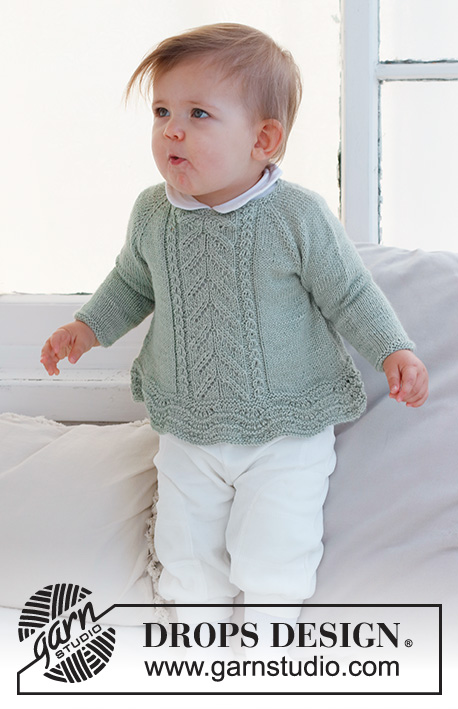 |
|||||||||||||||||||||
Knitted jumper for babies and children in DROPS Safran. The piece is worked top down with raglan, wave-pattern and lace-pattern. Sizes 0 - 6 years.
DROPS Baby 42-7 |
||||||||||||||||||||||
|
------------------------------------------------------- EXPLANATIONS FOR THE PATTERN: ------------------------------------------------------- RIDGE/GARTER STITCH (worked in the round): 1 ridge in height = 2 rounds; Knit 1 round and purl 1 round. RIDGE/GARTER STITCH (worked back and forth): Knit all rows. 1 ridge = knit 2 rows. PATTERN: See diagrams A.1 and A.2. The diagrams show all rows in the pattern from the right side. INCREASE TIP (for sides of body): Work until there are 2 stitches left before the marker, make 1 yarn over, knit 4 (marker thread sits between these 4 stitches), make 1 yarn over. On the next round work the yarn overs twisted to avoid holes. Then work the new stitches in stocking stitch. RAGLAN: Increase 1 stitch on each side of the 2 stocking stitches in each transition between body and sleeves (8 stitches increase on row/round). Increase 1 stitch by making 1 yarn over. On the next row (wrong side) purl the yarn overs twisted to avoid holes. On the next round (i.e. when working in the round) knit the yarn overs twisted to avoid holes. Then work the new stitches in stocking stitch. DECREASE TIP (sleeves): Decrease 1 stitch on either side of the marker as follows: Work until there are 3 stitches left before the marker, knit 2 together, knit 2 (marker sits between these 2 stitches), slip 1 stitch as if to knit, knit 1 and pass the slipped stitch over the knitted stitch. BUTTONHOLES: 2 buttonholes are worked on the bands at the back of the neck. Work from the right side when there are 3 stitches left on the row as follows: Make 1 yarn over, knit 2 together and knit 1. On the next row, knit the yarn over to leave a hole. The first buttonhole is worked when the neck measures 1½ cm. Then work the other buttonhole after 4 cm. ------------------------------------------------------- START THE PIECE HERE: ------------------------------------------------------- JUMPER – SHORT OVERVIEW OF THE PIECE: The piece is first worked back and forth from mid-back and top down. When the split is finished, it is continued in the round. The yoke is divided for the body and sleeves and the body continued in the round. The sleeves are worked in the round with double pointed needles. NECK: Cast on 73-77-81-85 (89-93-97) stitches with circular needle size 2.5 mm and DROPS Safran. Work 2 RIDGES back and forth – read description above. Change to circular needle size 3 mm. YOKE: READ THE NEXT SECTION BEFORE CONTINUING! The first row is worked as follows from the right side: 3 band stitches in garter stitch, 11-12-13-14 (15-16-17) stitches in stocking stitch (half back piece), 1 yarn over, 2 stitches in stocking stitch (raglan-line), 1 yarn over, 6 stitches in stocking stitch and increase 4 stitches evenly over these stitches (10 stitches on the sleeve), 1 yarn over, 2 stitches in stocking stitch (raglan-line), 1 yarn over, 0-0-0-1 (2-3-4) stitches in stocking stitch, A.1 (25-27-29-29 (29-29-29) stitches – see the start for your size in the smaller sizes, 0-0-0-1 (2-3-4) stitches in stocking stitch (= front piece), 1 yarn over, 2 stitches in stocking stitch (= raglan-line), 1 yarn over, 6 stitches in stocking stitch and increase 4 stitches evenly over these stitches (10 stitches on the sleeve), 1 yarn over, 2 stitches in stocking stitch (raglan-line), 1 yarn over, 11-12-13-14 (15-16-17) stitches in stocking stitch and 3 band stitches in garter stitch (half back piece). The first increase to RAGLAN – read description above, is now finished and there are 89-93-97-101 (105-109-113) stitches on the row. Continue with stocking stitch, A.1 and 3 band stitches in garter stitch on each side and continue to increase to raglan every 2nd row (each row from the right side) – REMEMBER THE KNITTING TENSION and the BUTTONHOLES – read description above. Increase like this every 2nd row (each row from the right side). The increased stitches are worked in stocking stitch. NOTE! In sizes 0/1 and 1/3 months first work the new stitches into A.1 then in stocking stitch. AT THE SAME TIME when the piece measures 6 cm join the piece on the next row from the right side as follows: Cast off the first 3 stitches and work to the end of the row. When the row is finished, continue in the round. You now are working stocking stitch on the back piece, stocking stitch and A.1 on the front piece. Move the beginning of the round to mid-back. Increase to raglan a total of 10-12-13-14 (15-16-18) times = 158-178-190-202 (214-226-246) stitches. Continue without further increases until the piece measures 9-10-11-12 (13-14-15) cm. Work the next round as follows: Work the first 24-27-29-31 (33-35-38) stitches, place the next 32-36-38-40 (42-44-48) stitches on a thread for the sleeve, cast on 6-6-6-8 (8-8-8) stitches (in side under sleeve), work 47-53-57-61 (65-69-75) stitches (front piece), place the next 32-36-38-40 (42-44-48) stitches on a thread for the sleeve, cast on 6-6-6-8 (8-8-8) stitches (in side under sleeve), work the last 23-26-28-30 (32-34-37) stitches. The body and sleeves are finished separately. BODY: = 106-118-126-138 (146-154-166) stitches. Insert 1 marker in each side, in the middle of the new stitches cast on under each sleeve. When the piece measures 3 cm from the division, increase 1 stitch on each side of both markers - read INCREASE TIP. Increase like this every 2 cm a total of 3-3-3-4 (4-4-4) times = 118-130-138-154 (162-170-182) stitches. When the piece measures 8-10-11-13 (15-18-21) cm from the division, work 2 ridges over all stitches. Knit 1 round where you increase 18-23-32-33 (42-34-39) stitches evenly spaced = 136-153-170-187 (204-204-221) stitches. Knit 1 round; the yarn overs are knitted twisted to avoid holes. Now work A.2 over all stitches. When A.2 has been completed in height, loosely cast off. The jumper measures approx. 25-28-30-33 (36-40-44) cm from the shoulder down. SLEEVES: Place the 32-36-38-40 (42-44-48) stitches from the thread on the one side of the piece on double pointed needles size 3 mm and knit up 1 stitch in each of the 6-6-6-8 (8-8-8) stitches cast on under the sleeve = 38-42-44-48 (50-52-56) stitches. Insert a marker in the middle of the new stitches under the sleeve. Work stocking stitch in the round. When the sleeve measures 3 cm from the division, decrease 1 stitch on each side of the marker - read DECREASE TIP! Decrease like this every 5-4-3-3 (4-5-3½) cm a total of 2-3-4-5 (5-5-7) times = 34-36-36-38 (40-42-42) stitches. When the sleeve measures 11-14-15-18 (21-26-29) cm, change to double pointed needles size 2.5 mm. Work 2 ridges over all stitches. Cast off with knit. Work the other sleeve in the same way. ASSEMBLY: Sew the buttons onto the band without buttonholes. Lay the button-band under the buttonhole-band and sew together at the bottom. |
||||||||||||||||||||||
Diagram explanations |
||||||||||||||||||||||
|
||||||||||||||||||||||
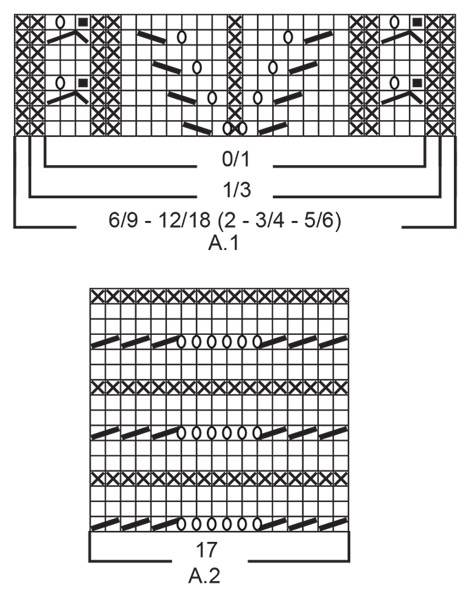 |
||||||||||||||||||||||
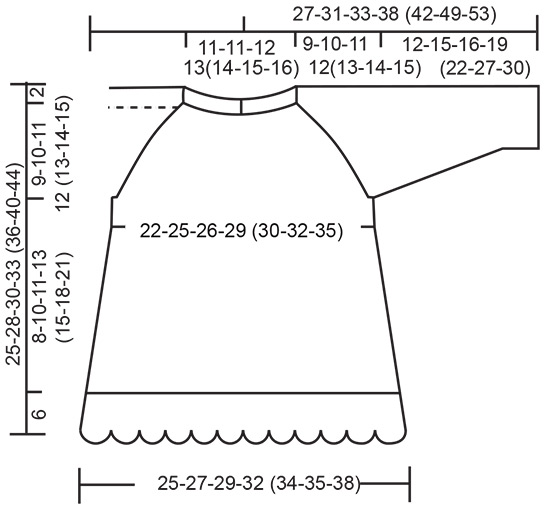 |
||||||||||||||||||||||
Have you finished this pattern?Tag your pictures with #dropspattern #sweetivysweater or submit them to the #dropsfan gallery. Do you need help with this pattern?You'll find 31 tutorial videos, a Comments/Questions area and more by visiting the pattern on garnstudio.com. © 1982-2025 DROPS Design A/S. We reserve all rights. This document, including all its sub-sections, has copyrights. Read more about what you can do with our patterns at the bottom of each pattern on our site. |
||||||||||||||||||||||







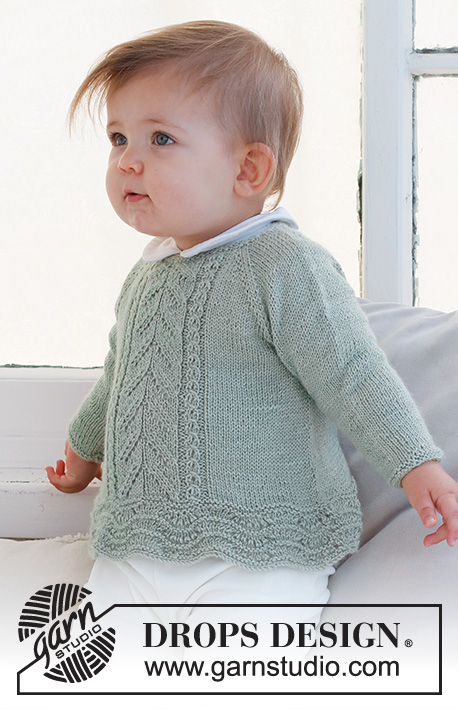

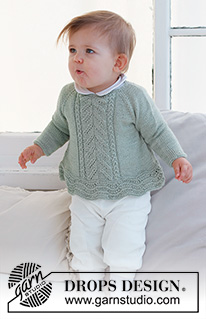
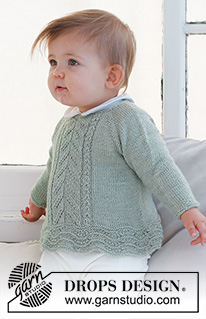




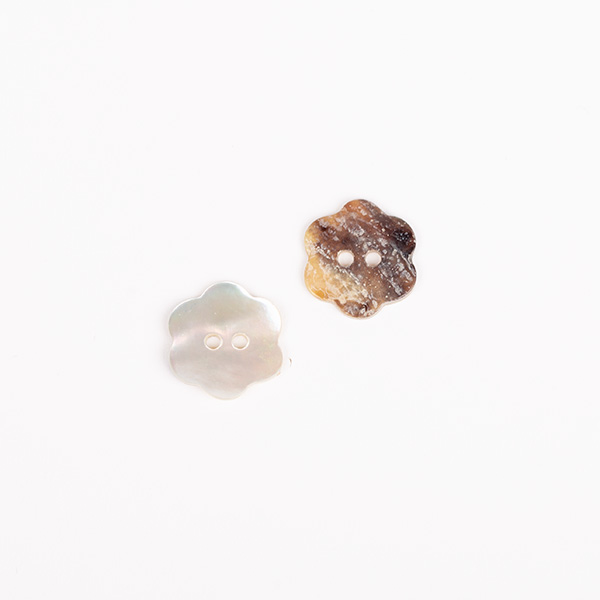

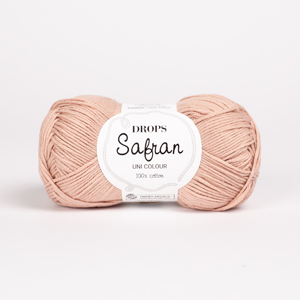






























































Post a comment to pattern DROPS Baby 42-7
We would love to hear what you have to say about this pattern!
If you want to leave a question, please make sure you select the correct category in the form below, to speed up the answering process. Required fields are marked *.